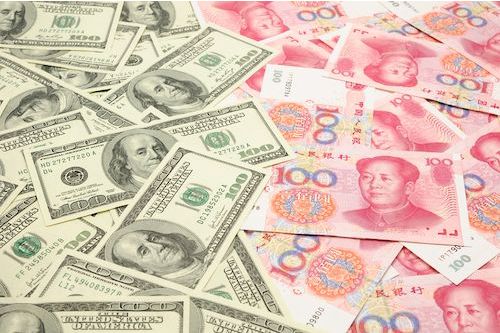
The U.S. Primarily Driving Markets
Despite what appears to be a serious build-up of geopolitical tensions between China and the USA over the sovereignty of Taiwan following House Speaker Nancy Pelosi’s brief visit to the self-governing island earlier this week, it has been U.S. domestic factors that have been primarily driving the dollar and U.S. markets.
The Pelosi visit, despite being supposedly in an unofficial capacity – are these things ever? – called the whole sham official U.S. one-China policy into question. The U.S. has always paid lip service to the official Chinese position that Taiwan is an integral part of the People’s Republic of China and consequently has no official diplomatic relations with the island. Yet it also supports unofficially its right to self-government, supplies its military with modern weaponry and has pledged to come to its defense should China invade. China, on the other hand, has always claimed that Taiwan is indeed a part of the Chinese nation and has pledged to bring it back into the fold, by force if necessary, at some unspecified date. So far this has led to an uneasy stand-off between China and Taiwan, with few countries actually officially recognizing the latter for fear of incurring China’s wrath.
The Biden Administration has consistently claimed that the Pelosi visit was purely a private one by the No.3 politician in the line of succession to the U.S. Presidency. However, the Chinese find this hard to comprehend given that nothing of this nature in its own system would be undertaken without the tacit approval of the Chinese Communist Party hierarchy and the thought that this probably applies to the U.S. as well. One suspects there may be some truth in that interpretation!
Since the Pelosi visit, when she held talks with the Taiwanese President, China has conducted live-fire military exercises all around Taiwan, including, on occasion, breaching its territorial limits. While this had all the attributes of the preparation for a full-scale invasion, so far the People’s Republic has stopped short of that, but demonstrated its capability of virtually isolating Taiwan from external direct contact. That was a huge warning sign which will not have gone unnoticed and will have further ramped up tensions over what many political observers have reckoned could be the flashpoint that sets off the next major superpower war.
But that, of course, is not the only global geopolitical flashpoint brewing. The war in Ukraine also has the prospect of developing into something more serious with neither side seems willing to give ground and the U.S. and its allies giving overt support in terms of weaponry supply to Ukraine. The truce that has allowed some much-needed Ukrainian food exports across the Black Sea seems a minor anomaly here while fighting seems to be intensifying elsewhere. Russia also appears to be building its alliance with Iran while North Korea remains a wild card on the international geopolitical scene. The U.S. conducts lethal drone strikes in Afghanistan. How long before the terrorists acquire drone technology to try and take out Western leaders? The world looks to be an altogether more dangerous place by the day.
On all these uncertainties developing we would have anticipated gold and silver to have benefited in price – particularly with inflation continuing to grow and the U.S. economy, by some measures, already in recession and likely to remain there. While President Biden and Fed chair Powell have expressed their views that the U.S. is not in a recession and inflation will come down, the latest U.K. analysis from the Bank of England should act as a warning sign with the prediction that U.K. inflation will rise to 13% from its current 9% level – a similar level to the U.S. – and while the U.S. economy does not necessarily follow the same path as that of the U.K., the underlying inflationary pressures are much the same and inflation may well get worse before it begins to get better.
Analysts are already predicting a more aggressive Fed at the next FOMC meeting on September 20th and 21st. The latest CME Fedwatch Tool prediction is now 68.5% for a 75 basis point interest rate increase at the meeting bringing rates to 3-3.25%, which has led to a stronger dollar and put a consequent dampener on the gold price which has been languishing in the $1,770s after, at one time, looking as though it would test the $1,800 level again on all the other global uncertainties. It may still do so.
We would expect equities and bitcoin to fall back as a 75 basis point rate increase would almost certainly affect risk-on markets negatively, but so far they have remained firm to stronger, but this may well not last if another rate increase of this magnitude continues to look likely.
Much may now depend on inflation data moving forward. Keep an eye open for the next CPI data announcement on August 10th and the PPI a day later. Figures higher than the July levels of 9.1% and 11.3% respectively could well knock equity prices back quite sharply, although falls could see a temporary boost.






